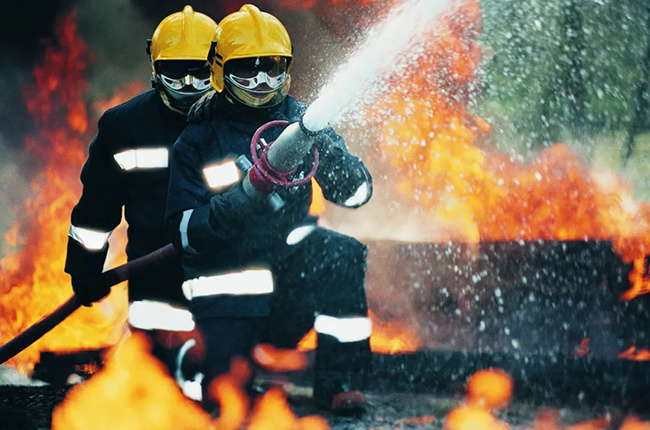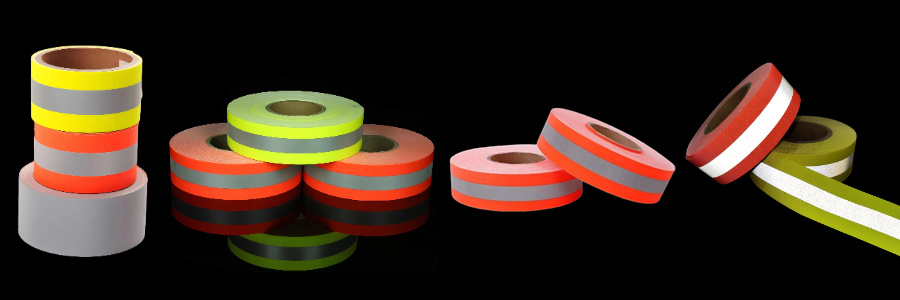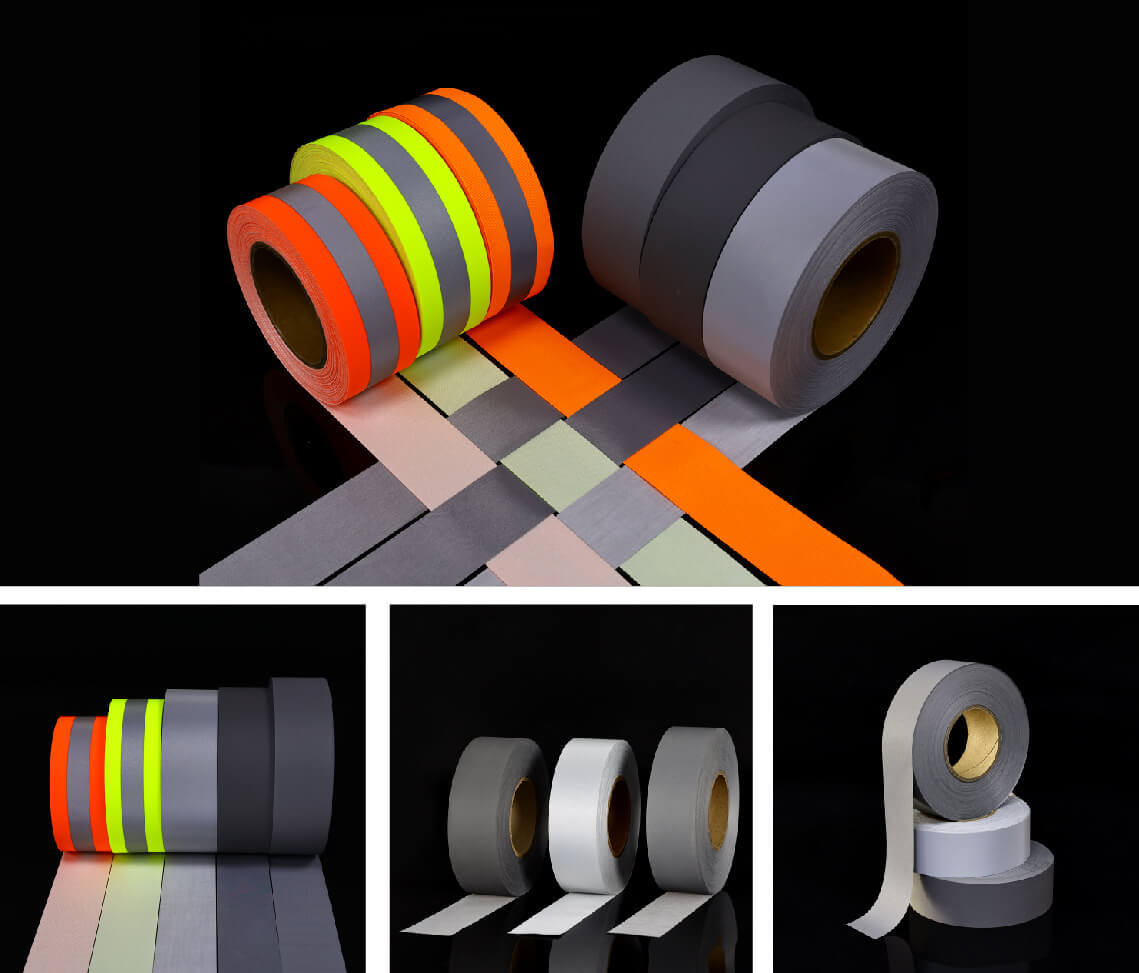How to Achieve Flame Retardancy of Flame Retardant Reflective Tape?
2025-03-26
Ysmlite
ysmlite.com
As a product with both high visibility and safety protection functions, the core competitiveness of flame retardant reflective tape lies in its ability to provide clear identification in low-light environments and to play a flame retardant and heat-insulating role in high-temperature fires. Its flame retardant performance mainly relies on the design of material molecular structure, the synergistic effect of additives and fine process control.

Material Chemistry and Molecular Engineering
Chemical Basis of Flame Retardant Mechanism
The flame retardant technology used in flame retardant reflective tape usually relies on two main mechanisms:
- Physical isolation effect: Under high temperature, a dense carbonized layer or silicate protective film is quickly formed on the surface of the material. This barrier effectively isolates oxygen and heat conduction. For example, silicon-based flame retardants can be converted into silicate structures under high temperature conditions, thereby forming a thermal barrier on the surface of the material.
- Chemical endothermic and dilution effect: Some flame retardants absorb a lot of heat during thermal decomposition, while releasing inert gases such as water vapor and carbon dioxide, which not only reduces the temperature of the combustion area, but also dilutes the concentration of combustible gases and inhibits the combustion chain reaction. Typical phosphorus-based flame retardants generate phosphoric acid or polyphosphates when decomposed, which helps the formation of the carbonization process.
Coordinated design of substrate and flame retardant
The substrate of fire retardant reflective tape usually uses polymers with good mechanical toughness and weather resistance such as polyester, PVC, and polyamide, which are modified to enhance the compatibility with flame retardants. The key lies in:
- Surface modification technology: Plasma treatment or coupling agent modification can improve the interfacial adhesion between the flame retardant and the substrate, so that the flame retardant is evenly dispersed in the polymer, thereby improving the overall flame retardant effect.
- Synergistic effect of multiple flame retardants: For example, the combination of halogen flame retardants and halogen-free flame retardants complement each other through their different working mechanisms. On the one hand, halogen flame retardants can capture free radicals generated during combustion; on the other hand, halogen-free flame retardants (such as phosphorus and silicon) isolate oxygen and heat by forming a protective layer.
Application of nanotechnology in flame retardancy
In recent years, nano-scale additives such as nanoclay, carbon nanotubes, graphene and other materials have been introduced into flame retardant systems:
- Nanoclay: It has a layered structure and can form an efficient barrier in the polymer, significantly reducing thermal conductivity while improving the mechanical strength of the material.
- Graphene and carbon nanotubes: Not only can they promote the formation of a carbonized layer during combustion, but they can also enhance the product's thermal conductivity and heat dissipation capabilities and delay the temperature rise process. This multifunctional composite material provides flame-retardant reflective tapes with better impact resistance and weather resistance.

Formulation design and additive optimization
Types of flame retardants, addition amounts and synergistic effects
In the research and development process, the synergistic effects of different types of flame retardants are extremely critical:
- Halogen flame retardants: For example, bromine and chlorine products react quickly at low temperatures, but their use is usually limited due to environmental regulations.
- Halogen-free flame retardants: such as phosphorus-based, silicon-based and nitrogen-based flame retardants, which have better environmental performance and can effectively form a heat-insulating layer at high temperatures.
- Synergistic effect research: Through laboratory thermogravimetric analysis (TGA), differential scanning calorimeter (DSC), smoke density test and cone calorimeter (Cone Calorimeter) and other testing methods, the R&D team can accurately control the amount of each flame retardant added to achieve the best flame retardant effect while maintaining the flexibility and viscosity of the tape.
Formula debugging and process compatibility optimization
When designing a formula, it is necessary to balance flame retardant properties with other physical and mechanical properties:
- Additive dispersibility: Ensuring uniform dispersion of flame retardants in the polymer matrix is the key, which usually relies on high shear mixing and ultrasonic dispersion technology to avoid local high concentration or agglomeration.
- Adhesive and reflective layer compatibility: The compatibility between the reflective layer material (such as micro glass beads, reflective micro beads) and the flame retardant matrix needs to be adjusted by surfactants or coupling agents to ensure that the flame retardant does not affect the optical properties.
Production process and process control
Precision process control
The production of fireman reflective tape involves multiple processes, each of which has a profound impact on the final performance of the product:
- Mixing process: During the mixing of raw materials, temperature, pressure and shear rate must be precisely controlled to ensure that the flame retardant is fully dispersed. Modern mixing equipment uses a closed-loop control system to monitor the mixing uniformity in real time.
- Extrusion and coating technology: The extrusion process is the key to achieving high uniformity and stable thickness. High-precision molds and temperature control systems ensure that the components do not react prematurely or degrade during the tape molding process.
- Reflective layer printing and curing: During the printing process, the reflective material is evenly distributed on the surface of the substrate through precise screen printing or digital printing technology, while avoiding the adverse effects of high temperatures on the flame retardant during the curing process.
Online detection and quality control system
To ensure that each roll of product meets strict technical standards, modern production lines are equipped with a comprehensive online detection system:
- Real-time thickness and uniformity detection: Using laser thickness gauges and high-resolution camera systems, the surface and internal distribution of the product are monitored in real time.
- Temperature and gas monitoring: During the production process, online infrared sensors and thermal imaging equipment are used to detect temperature distribution to ensure that the flame retardant works stably at the predetermined temperature.
- Mechanical and adhesion performance testing: Through automated tensile testers and viscosity testers, ensure that the product still maintains good physical properties in various environments.

Flame retardant performance testing and safety certification
Comprehensive application of multiple test standards
FR reflective tape must meet strict international and regional flame retardant test standards, the common ones are:
- UL 94: Evaluate the self-extinguishing performance and flame spread rate of materials, suitable for plastic combustion testing.
- IEC 60695 series: Covers indicators such as flame spread, heat release and smoke density, providing a scientific basis for electronic products and building materials.
- LOI (oxygen index) test: By determining whether the material can continue to burn under a specific oxygen concentration, its flame retardant effect is evaluated.
- EN 13501: European fire reaction level standard for building materials, ensuring the applicability of products in building fire protection design.
Environmental certification and continuous improvement
As environmental standards continue to improve, flame-retardant reflective tapes must comply with environmental certifications such as RoHS and REACH while ensuring flame-retardant properties:
- Low emissions of harmful substances: Reduce the environmental burden during production and use by selecting halogen-free, low-volatile organic compound (VOC) flame retardants.
- Green process transformation: Optimize production processes, reduce energy consumption and waste emissions, and ensure that the entire life cycle meets sustainable development requirements.
Application cases and industry frontiers
Traffic and road safety
In the safety signs of urban roads, airport runways and highways, flame-retardant reflective tapes play a vital role:
- Emergency evacuation instructions: When a fire accident occurs, the stable carbonized layer formed on the surface of the tape can continue to reflect light in a high temperature environment, providing clear guidance for personnel evacuation.
- Fire isolation: In complex structures such as tunnels and bridges, its flame retardant properties greatly reduce the risk of fire spread and play a key protective role.
Industrial production and storage protection
In high-temperature and high-risk industrial environments, flame-retardant reflective tapes are often used to mark dangerous areas, fire passages and safety exits:
- Equipment and pipeline marking: In flammable and explosive places such as oil and chemical plants, flame-retardant tapes not only improve the visibility of safety signs, but also effectively delay the combustion process in the early stage of a fire and reduce the risk of accidents.
- Warehouse environment management: For large-area places such as warehouses and logistics centers, flame-retardant reflective tapes help to achieve regional separation and personnel guidance, and improve the overall safety management level.
Building decoration and public safety facilities
In modern architectural design, flame-retardant reflective tapes not only have practical functions, but also take into account beauty and design:
- Intelligent safety signs: Some products embed optical fiber sensors and temperature monitoring modules to achieve early warning of fires and information linkage, thereby improving the overall safety and intelligence level of buildings.
- Cultural and creative design: In commercial centers, exhibition halls and other places, designers use the color and pattern design of flame-retardant reflective tapes to create a decorative effect that combines safety and art.
Future Trends and Prospects for Technological Innovation
With the continuous development of new material technology and intelligent manufacturing, flame-retardant reflective tapes will usher in more innovations and breakthroughs:
- Intelligent integration technology: In the future, it is expected that sensors such as temperature, smoke, and strain will be embedded in the tape to achieve real-time monitoring and remote warning, and improve the efficiency of accident response.
- Multifunctional composite system: Combining multiple functions such as antibacterial, anti-ultraviolet, conductive heat dissipation, etc., it plays a greater role in special environments.
- Bio-based and degradable materials: In order to adapt to the global green environmental protection trend, the development of flame-retardant reflective tapes based on bio-based polymers will become a research hotspot, which not only meets the flame retardant needs, but also meets environmental protection requirements.
The development of flame-retardant reflective tapes combines chemical materials, engineering technology and advanced detection methods. Through fine formula design and strict process control, it has achieved excellent flame retardant performance under high temperature fire conditions. Whether in traffic safety, industrial protection or architectural decoration, its application has greatly improved environmental safety and emergency response capabilities. With the continuous innovation of technology and the improvement of environmental protection requirements, the flame-retardant reflective tapes of the future will surely move towards intelligence, multi-function and green environmental protection, providing more efficient and reliable safety protection for all walks of life.
Related News
How Long Can the Luminous Pigment Powder Glow? How Does It Glow?
2025-04-29
Why Fabrics Are Crucial to Reflective Tape for Clothing Performance
2025-04-25
Reflective Tape for Clothing: The Night Guardian of Safety Workers
2025-04-22





